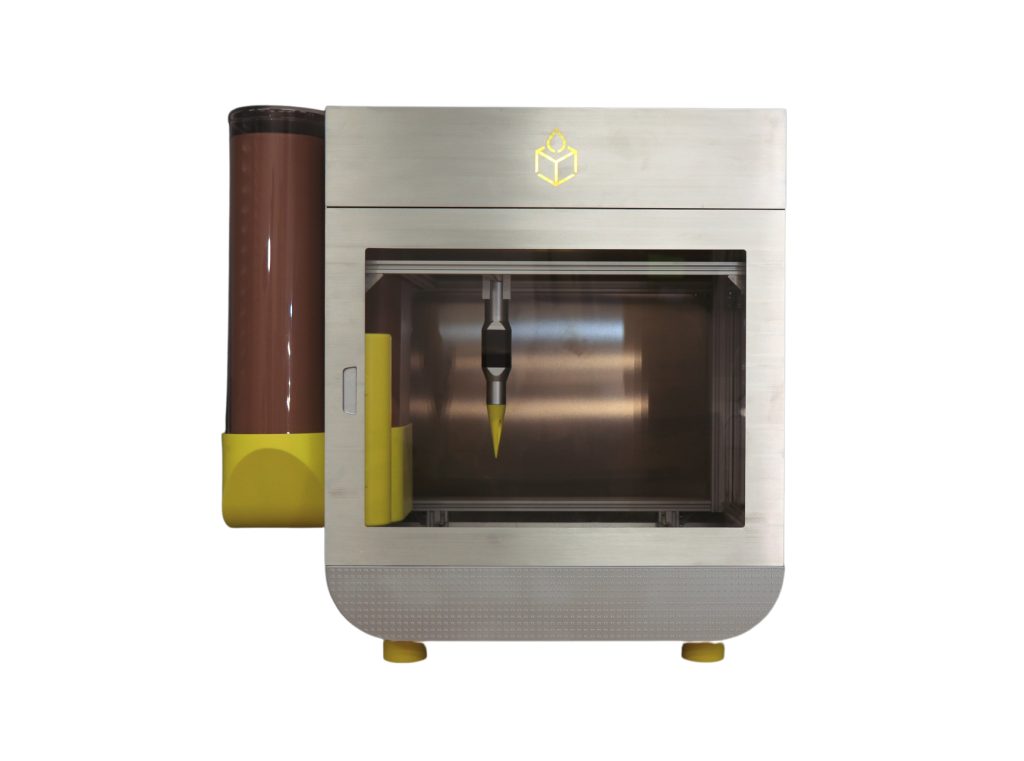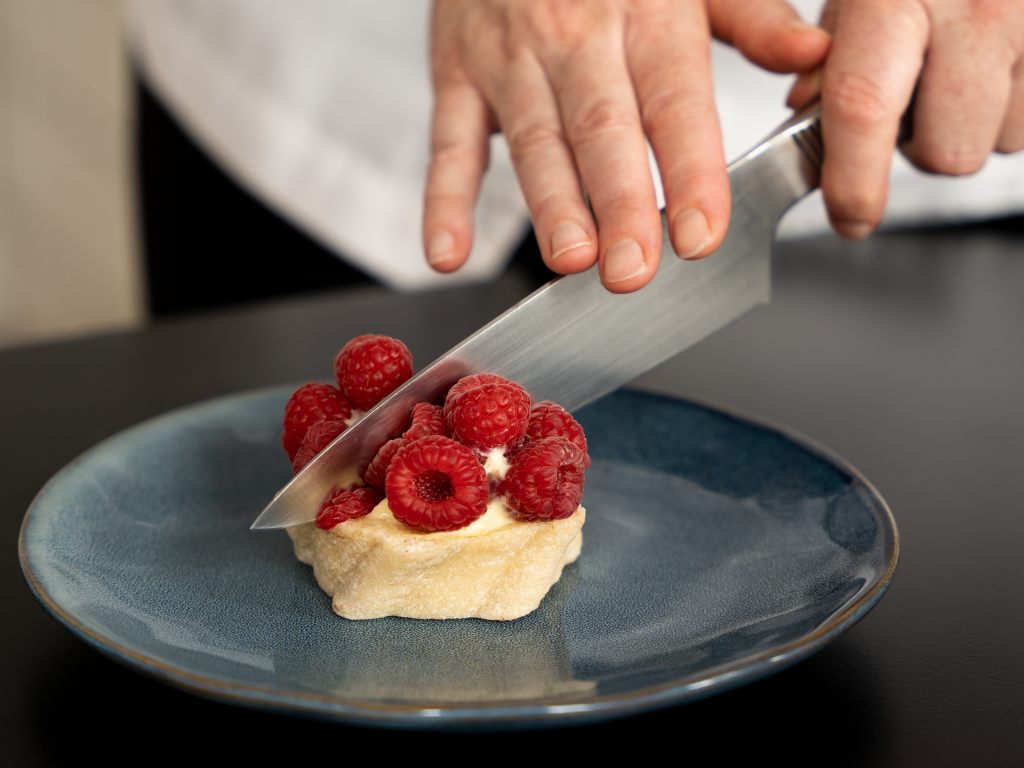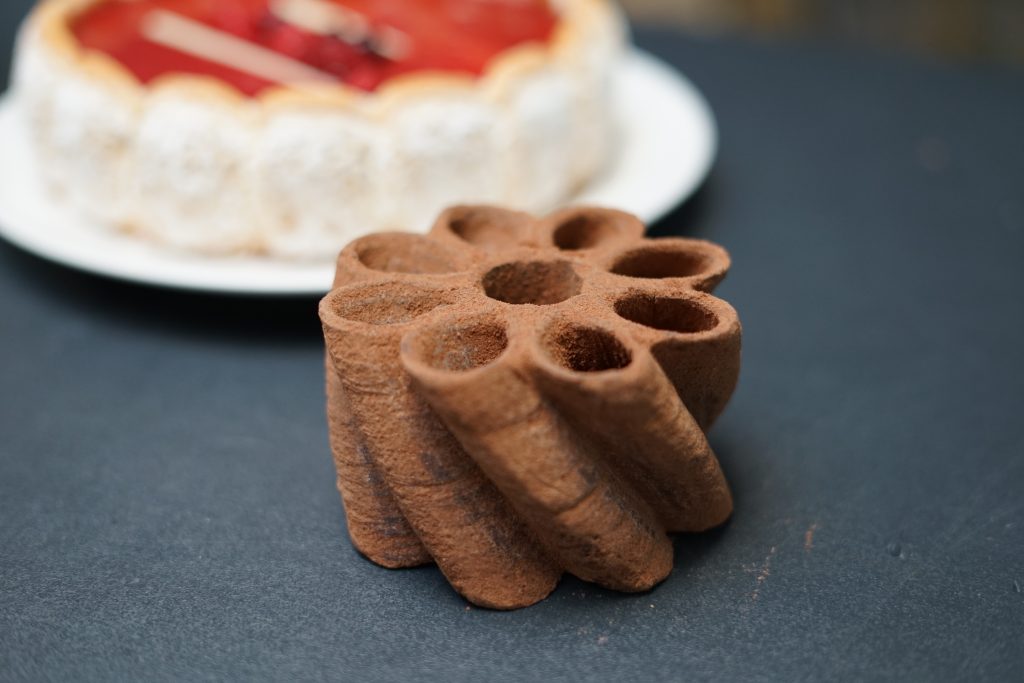Food 3D printing firm Digital Patisserie has announced the launch of its new pastry 3D printer, the Patiss3.
Reportedly inspired by 3D printing technology developed at MIT, the extrusion-based system is aimed at pastry chefs, restaurants, and industrial biscuit factories, enabling users to fabricate edible freeform shapes at high speeds.
The Patiss3 is currently being showcased at VivaTech until June 18, which is held at Paris Expo Porte de Versailles. Visitors can visit the firm’s booth (F60) and sample a small 3D printed cake named Coral. The dessert is a reimagining of the French pastry ‘Concorde’ and features chocolate mousse, meringue, 3D printed cocoa shortcrust pastry, and fruit confit.
Marine Coré-Baillais, founder of the Digital Pâtisserie, said, “This 3D food printing technology provides all pastry chefs with a production method enabling them to rethink shapes and flavors by freeing them from time, gravity, and handling constraints. This transforms the creativity of an entire industry for the benefit of our taste buds, whether savory or sweet!”

Food 3D printing with the Digital Pâtisserie
Coré-Baillais has been involved with additive manufacturing for around a decade. Having graduated from ESSEC business school, she’s previously served as Deputy CEO of 3D printing service provider Sculpteo.
In 2018, she obtained a vocational diploma (CAP) from the École de Boulangerie et de Pâtisserie in Paris and just a year later founded the Digital Pâtisserie. Then in 2020, she launched the CakeWalk, an extrusion add-on that converts run-of-the-mill desktop 3D printers into food printing systems.
The Digital Pâtisserie also specializes in online courses dedicated to 3D printing food products and even has its own slicing software, which was developed in partnership with the University of Technology at Troyes.

The Patiss3 food 3D printer
Designed exclusively to 3D print rigid pastry structures, the Patiss3 uses two different powder-based materials. The first is the flavorless structural powder that allows the prints to hold their shape, while the other is cocoa-based and serves to reduce the bitterness of the printing mix. Users can integrate their own cake batter mixes to create unique recipes with varying textures and flavors.
Providing an alternative to conventional pastry making, the machine can be used to rapidly print ready-to-fill freeform shells with accuracies down to the nearest millimeter. Digital Pâtisserie estimates that the printer can increase the profitability of a customer’s business by up to 26% thanks to the elimination of silicone and steel molds, as well as greater material efficiencies.
The Patiss3 is available with two additional optional modules: a depowdering station for printing material recovery and an oven for faster cooking times. The depowdering station can be used to recover any unused powder from the printing stage, which can then be reused up to seven times in subsequent recipes.
Coré-Baillais adds, “Based on a 3D file, it is possible to produce every possible form that could be imagined, in biscuit for example, while controlling flavors and preserving the original taste of the recipe.”
Finally, the Patiss3 comes complete with a digital marketplace accessible via the firm’s proprietary app. It comprises an entire catalog of 3D printable recipes from well-known chefs, who receive royalties every time their pastry design is 3D printed.

Despite its niche status, the food 3D printing sector is an active one. Just recently, Natural Machines, a Spain-based developer of food 3D printing technology, printed a replica of the world’s best tiramisu. The heart-shaped dessert took first place at last year’s Tiramisù World Cup (TWC), and has now been faithfully recreated using the firm’s proprietary Foodini additive manufacturing system.
Elsewhere, Japanese precision instrument manufacturer Shimadzu recently announced plans to create a dedicated meat 3D printing system. Working with Osaka University and consultancy firm Sigmaxyz Inc, the firm is reportedly developing a machine capable of churning out large quantities of cultured meat, much like an automated production line.
Subscribe to the 3D Printing Industry newsletter for the latest news in additive manufacturing. You can also stay connected by following us on Twitter, liking us on Facebook, and tuning into the 3D Printing Industry YouTube Channel.
Looking for a career in additive manufacturing? Visit 3D Printing Jobs for a selection of roles in the industry.
Featured image shows the Patiss3 food 3D printer. Photo via Digital Patisserie.



